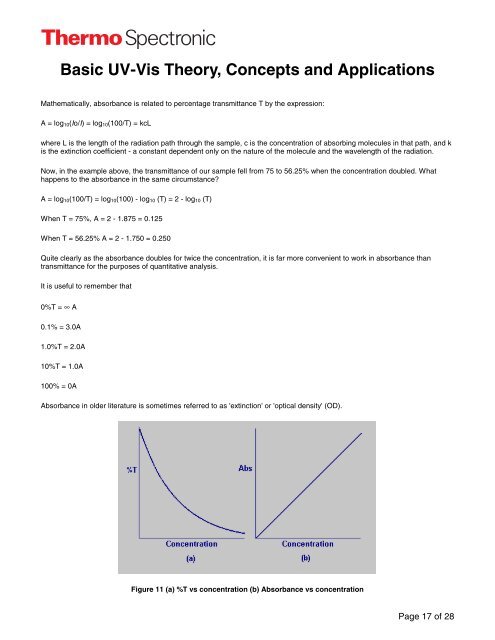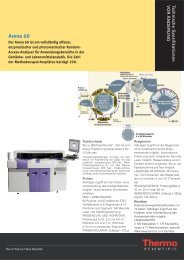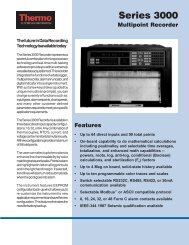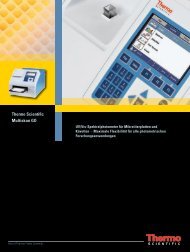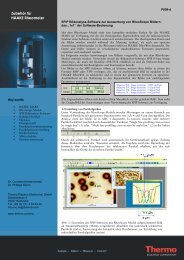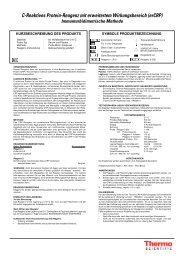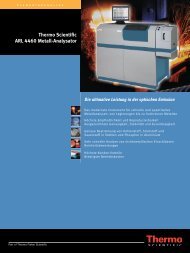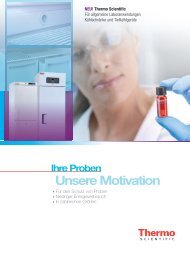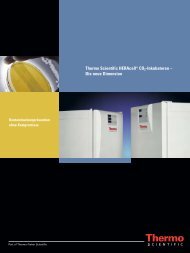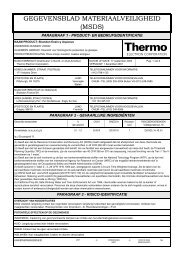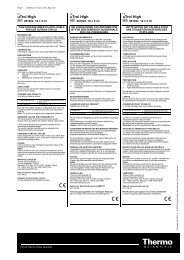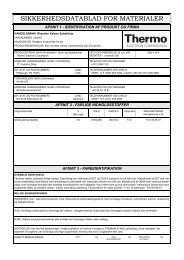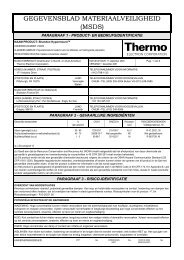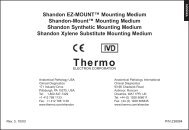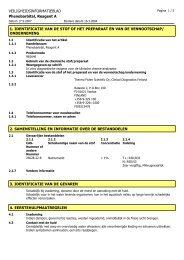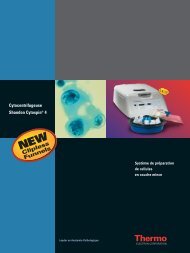Basic UV-Vis Theory, Concepts and Applications
Basic UV-Vis Theory, Concepts and Applications
Basic UV-Vis Theory, Concepts and Applications
You also want an ePaper? Increase the reach of your titles
YUMPU automatically turns print PDFs into web optimized ePapers that Google loves.
<strong>Basic</strong> <strong>UV</strong>-<strong>Vis</strong> <strong>Theory</strong>, <strong>Concepts</strong> <strong>and</strong> <strong>Applications</strong><br />
Mathematically, absorbance is related to percentage transmittance T by the expression:<br />
A = log10(Io/I) = log10(100/T) = kcL<br />
where L is the length of the radiation path through the sample, c is the concentration of absorbing molecules in that path, <strong>and</strong> k<br />
is the extinction coefficient - a constant dependent only on the nature of the molecule <strong>and</strong> the wavelength of the radiation.<br />
Now, in the example above, the transmittance of our sample fell from 75 to 56.25% when the concentration doubled. What<br />
happens to the absorbance in the same circumstance?<br />
A = log10(100/T) = log10(100) - log10 (T) = 2 - log10 (T)<br />
When T = 75%, A = 2 - 1.875 = 0.125<br />
When T = 56.25% A = 2 - 1.750 = 0.250<br />
Quite clearly as the absorbance doubles for twice the concentration, it is far more convenient to work in absorbance than<br />
transmittance for the purposes of quantitative analysis.<br />
It is useful to remember that<br />
0%T = ∞ A<br />
0.1% = 3.0A<br />
1.0%T = 2.0A<br />
10%T = 1.0A<br />
100% = 0A<br />
Absorbance in older literature is sometimes referred to as 'extinction' or 'optical density' (OD).<br />
Figure 11 (a) %T vs concentration (b) Absorbance vs concentration<br />
Page 17 of 28


